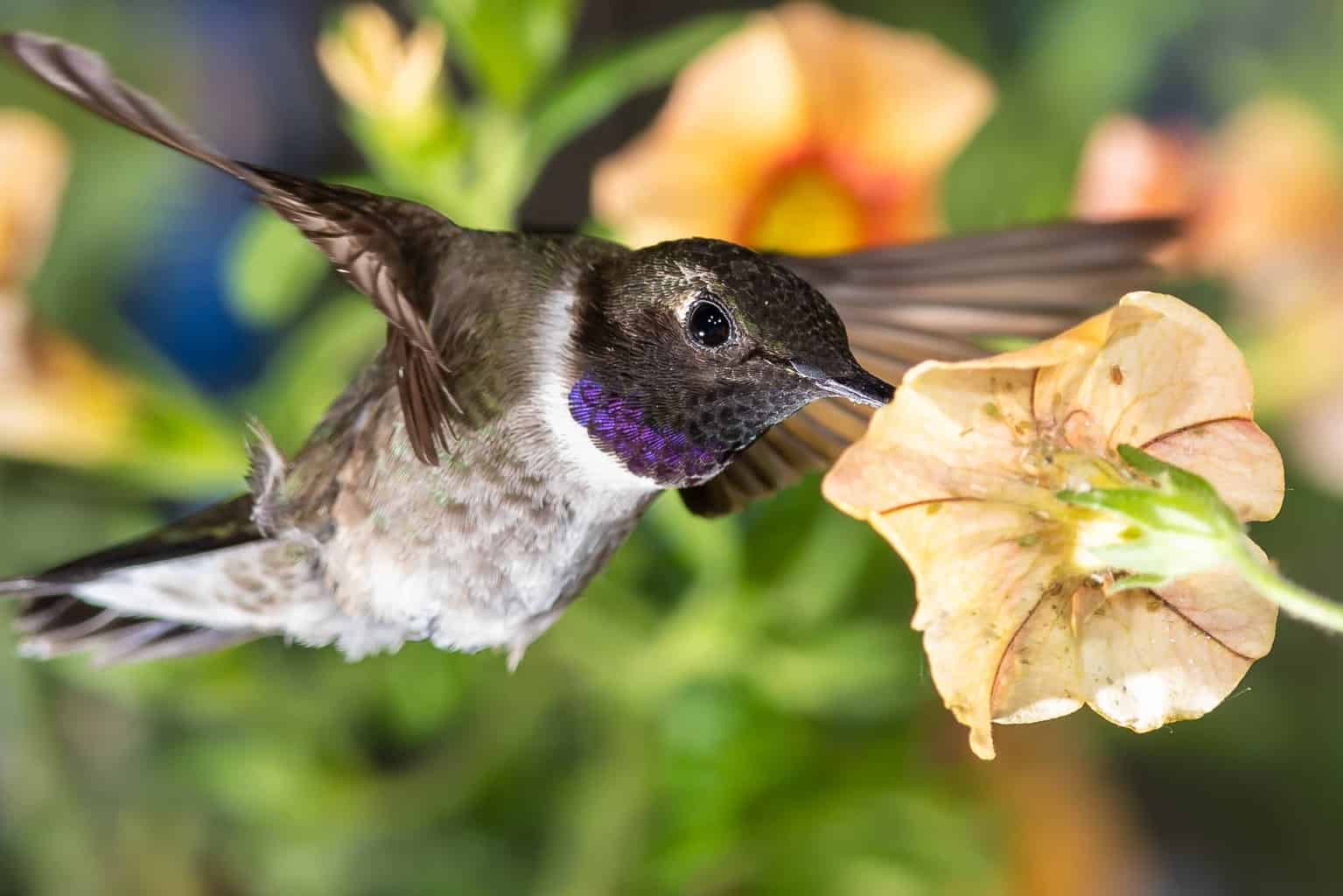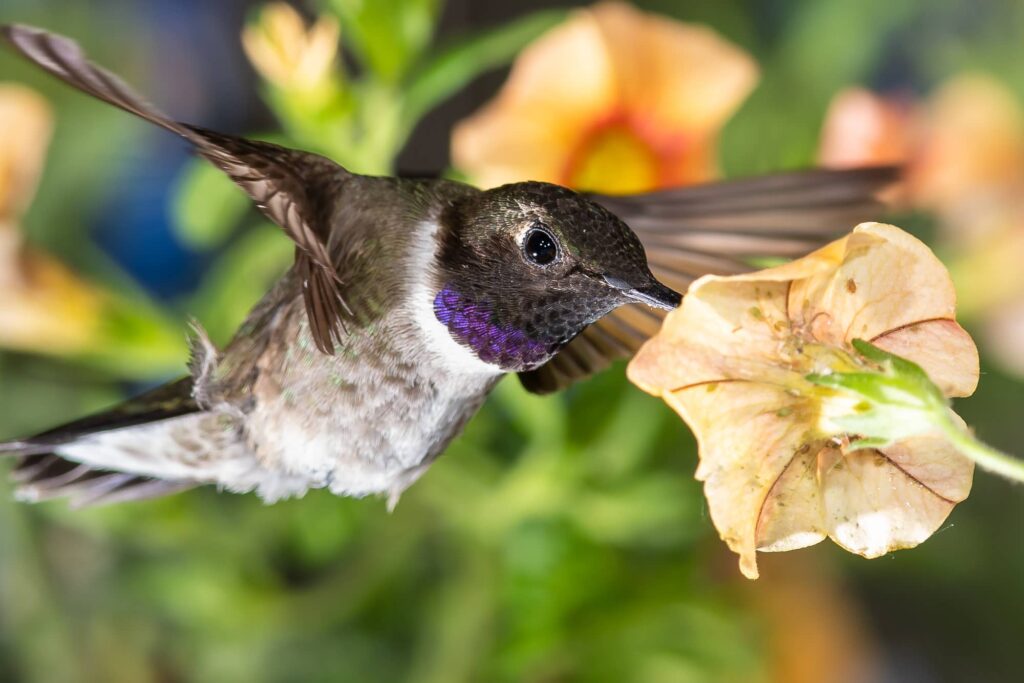The mountain state is famed for its natural attractions. Bird watchers will be very happy here exploring all that the rugged and mountainous terrain has to offer. Even in more populated areas of the state, hummingbirds can be spotted during spring and fall migration and sometimes through the warmer summer months. You might even glimpse the odd hummingbird in winter.
Ruby-throated hummingbirds begin to arrive in West Virginia in late March. Some are just passing through on the spring hummingbird migration. Some will remain here to breed and nest in the state. Migrants are gone by June, but others will stay longer and may even be seen in West Virginia as late as the following January.
Understanding the migratory habits of hummingbirds can help you catch sight of these amazing creatures. It can also help you know how to attract and care for them while they are in your area. So read on to find out more.
What Hummingbirds are Seen in West Virginia?
The Ruby-throated hummingbird is by far the most commonly seen hummingbird in this state. These are the only hummingbirds that will reside for any length of time in the state and the only hummingbird to breed in this region.
However, on rare occasions, Rufous hummingbirds may be seen as vagrants. Even more unusual sightings also occur. For example, a Violetear has been seen in West Virginia, and rare sightings of Black-chinned hummingbirds and Broad-tailed hummingbirds have also been reported.

When Do Hummingbirds Arrive in West Virginia?
Hummingbirds will typically begin to arrive in West Virginia in late March. The male Ruby-throated hummingbirds usually come first, around a week or two before the females. Their goal and mission are to establish territory before the breeding season begins in June.
While you should usually expect the first hummingbird visitors to arrive around late March, not all the birds will arrive at once.
Hummingbirds migrate as individuals during the spring and fall hummingbird migration. Each one arrives independently and travels according to its independent schedule, never as one big group.
The timing of the hummingbird migrations can also vary a little depending on the conditions of a given year. But their arrival will usually only vary slightly from one year to the next. Milder and more southern areas can expect to see these birds just a little earlier than those further to the north.
Preparing for the Arrival of Hummingbirds in West Virginia
Getting ready for the arrival of hummingbirds in West Virginia might mean making plans for spring day trips or finding ways to get out and about to engage with nature in your area.
The Appalachian Mountain Range, of course, offers boundless opportunities to get out there and enjoy the natural world. Wherever you live in the state, there are plenty of beautiful nature spots where hummingbirds and other amazing bird species can be seen.
However, if you have a garden, it might also mean taking steps to ensure that your outside space is as hummingbird-friendly as possible.
How to Attract Hummingbirds to a West Virginia Garden
Creating a hummingbird-friendly West Virginia garden is, first and foremost, about creating a safe environment for summer staying and migrating birds. This means, among other things, always gardening organically.
It might also mean avoiding the use of netting or other things that might ensnare flying friends. Another thing to consider is keeping cats indoors.
Beyond this, remember that providing a meal for hummingbirds is not just about placing feeders, though this can be a great idea. You should also provide sustenance for these visitors through natural means. Include plenty of plants in your garden that provide nectar and entice the insects that hummingbirds also like to eat.
Choosing native plants is always the best option. Native plants are best suited to the conditions and provide hummingbirds and other native wildlife with what they need. You might include, for example:
- Bee balm
- Buckeye
- Cardinal flower
- Coral honeysuckle
- Eastern Columbine
- Fire pink
- Gayfeather
- Great Blue Lobelia
- Jewelweed
- Trumpet creeper
Of course, this is just a small selection of plants that could benefit hummingbirds in your garden.
Layered, diverse planting appropriate to the place will help hummingbirds feel at home. It will shelter them, give them places to perch, and perhaps even nesting sites.
Having water in your garden will also help provide hummingbirds with a beneficial habitat. So, consider adding a water feature, such as a wildlife pond, to give hummingbirds somewhere to bathe, increase beneficial insect numbers, and benefit a range of other wildlife in your space.
When Should I Put Out Hummingbird Feeders in West Virginia?
To cater to early migrants arriving in the state, it is best to place out your hummingbird feeders a couple of weeks before you expect the first of the spring migrating hummingbirds to arrive.
In West Virginia, this typically means placing a hummingbird feeder in early March. However, some benevolent gardeners may like to leave out hummingbird feeders year-round to provide for those rarer sightings and birds that cannot make the migration.
When Do Hummingbirds Leave West Virginia?
Hummingbirds that will migrate south to wintering grounds in Mexico and Central America will typically begin to leave in early September. However, some males may already have gone a little earlier.
During September and October, birds that nested further north will potentially be seen as they pass back south through the state.
Those that have nested in West Virginia and will migrate southward will typically be gone from the state by mid-October.
However, not all hummingbirds will migrate south. There will be a proportion that is too old or infirm to make the long trip. These birds may remain in West Virginia, and Ruby-throated hummingbirds have been seen in West Virginia as late as January.
Some other birds, such as Rufous hummingbirds, may also occasionally overwinter in the state or be glimpsed during the colder months.
When Should I Take Down Hummingbird Feeders in West Virginia?
Hummingbird feeders should be left out until you have no longer had any hummingbird sightings for a couple of weeks; around the beginning of November in some West Virginia gardens.
However, you may still have some sightings after this date. If you do, you should certainly consider doing the kind thing and keeping your hummingbird feeders up through the winter months.
Remember, helping hummingbirds is not just a kind thing to do; it also benefits the ecosystem as a whole, which benefits all of us. Hummingbirds are important pollinators and are crucial environmental elements. So, by helping them, you’re doing your part to halt biodiversity losses. Do what you can to encourage and support them in your West Virginia garden.

